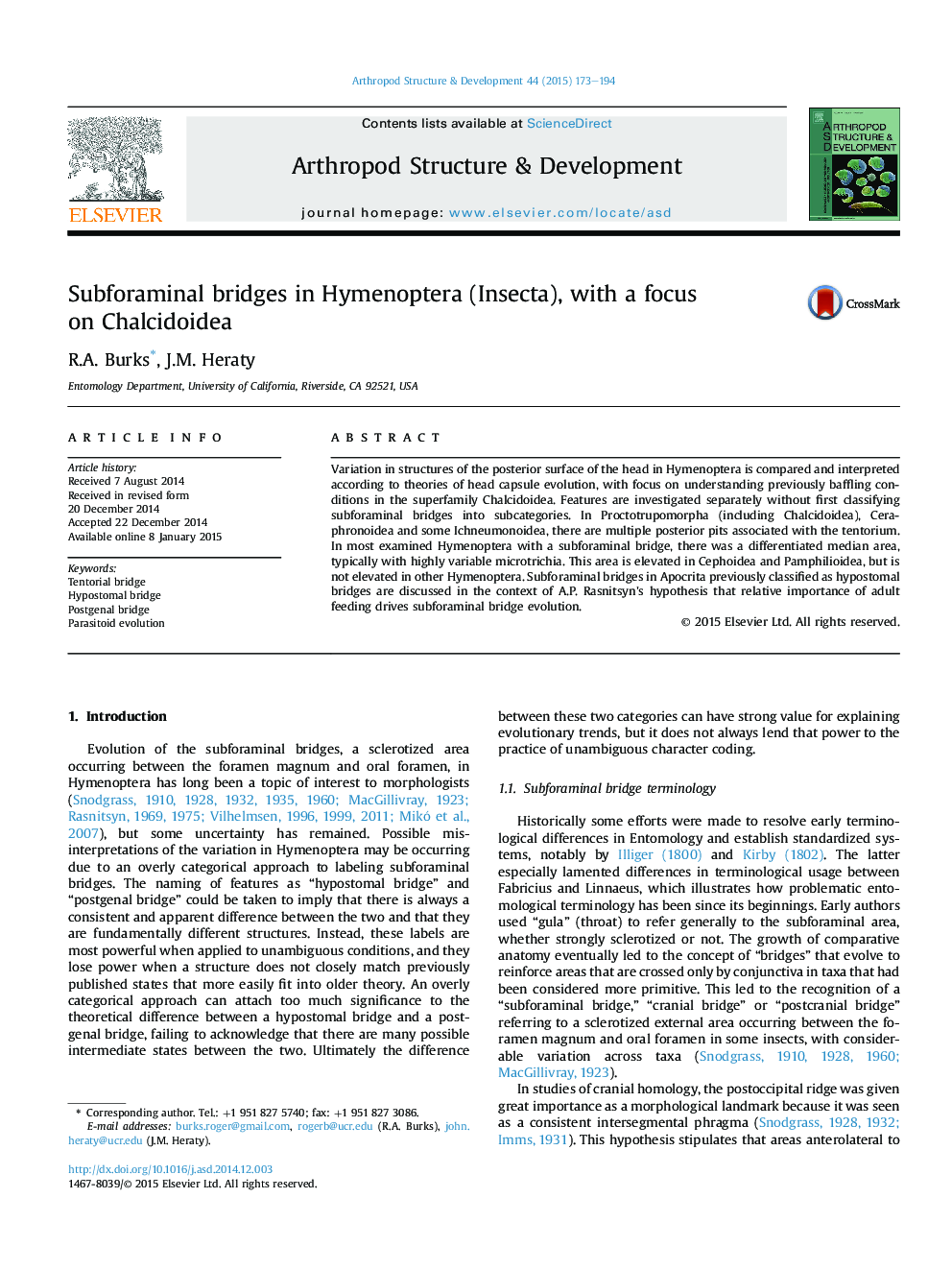| Article ID | Journal | Published Year | Pages | File Type |
|---|---|---|---|---|
| 2778631 | Arthropod Structure & Development | 2015 | 22 Pages |
•subforaminal bridges in Hymenoptera proved difficult to classify as postgenal or hypostomal bridges in some Hymenoptera.•External features especially proved to be less reliable as landmarks than previously suspected.•Some Hymenoptera possess multiple posterior tentorial pits, with homology best determined by tentorial investigation.•Some subforaminal features may support monophyletic lineages in Hymenoptera, but the data are incomplete thus far.
Variation in structures of the posterior surface of the head in Hymenoptera is compared and interpreted according to theories of head capsule evolution, with focus on understanding previously baffling conditions in the superfamily Chalcidoidea. Features are investigated separately without first classifying subforaminal bridges into subcategories. In Proctotrupomorpha (including Chalcidoidea), Ceraphronoidea and some Ichneumonoidea, there are multiple posterior pits associated with the tentorium. In most examined Hymenoptera with a subforaminal bridge, there was a differentiated median area, typically with highly variable microtrichia. This area is elevated in Cephoidea and Pamphilioidea, but is not elevated in other Hymenoptera. Subforaminal bridges in Apocrita previously classified as hypostomal bridges are discussed in the context of A.P. Rasnitsyn's hypothesis that relative importance of adult feeding drives subforaminal bridge evolution.
